
Final Event successfully held in Amsterdam
Final Event successfully held in Amsterdam - BIKE IS OUR CHIOCE
The Cyclewalk Project aims at supporting the shift from car usage to cycling and walking mobility patterns over shorter distances, improving the accessibility for pedestrians and cyclists. CYCLEWALK will also contribute to the transition to a more sustainable alternative for urban mobility.
The partnership is composed by seven partners from six European countries (Romania, Italy, Slovenia, Holland, Lithuania, Austria).
The project will introduce quality criteria for proper walking and cycling infrastructure in the policy instruments and projects, through the following activities:
€1,591,327.00
Low-carbon economy
The Project Partners will achieve the objectives of CYCLEWALK through a properly designed interregional learning model on the different regional processes. The regions will select and adopt the best practices collected in each other’s and those suggested by the advisory partner; the adoption will be carried out according to the action plan developed by each partner.
The partners will define a common methodology for the action plan clearing how the knowledge acquired through the interregional learning will be implemented and how the quality criteria should be ensured by the future cycling and walking measures and investments.
Oradea Metropolitan Area Intercommunity Development Association is an association of 12 municipalities which are forming the functional urban area of Oradea. OMA was empowered to provide the strategic support in developing projects related to sustainable mobility for all its members, including the city of Oradea.
The Regional Operational Programme (ROP) of Romania continues the strategic development vision of Romania, started in the previous programming periods. Among the development needs identified within the document, emphasis is put on the high level of GHG emissions and pollution generated by traffic in the urban areas.
ROP is supporting the development of cycling and walking infrastructures in urban areas within two objectives ot the Interreg Europe Programme, “Promoting the reduction of carbon emissions for all territories, particularly in the urban areas”, and “Reduction of carbon emissions in county capitals through investments based on sustainable urban mobility plans”. These objectives will be pursued through a series of actions, including the development of a cycling-friendly road infrastructure through investments targeting the construction/modernisation/rehabilitation of cycling paths/roads and its related infrastructure (rental points, parking facilities, etc.), and investments oriented to the creation of pedestrian areas and paths.
Even if the Sustainability Urban Mobility Plan is elaborated, this document is not defining the concrete measures to be taken to ensure the quality and safety of investments related to cycling and pedestrian infrastructures. The project aims to complement the Sustainability Urban Mobility Plan by identifying a set of recommendations, improving thus the impact and sustainability of the projects implemented through the Regional Operational Programme.
The Municipality of Olbia has undergone a process of redesigning urban mobility according to its administrative competences, as a result of a growing awareness towards the need for planning mobility in an integrated way, but also as a way to attract new tourism. Attempts in building new infrastructure has been done. This has led to the final drafting of a multiannual Urban Mobility Plan, which foresees the deployment of new cycling and walking infrastructure within the urban area.
The Urban Mobility Plan (UMP) of the Municipality of Olbia has been adopted by the local city council in 2015 with the aim to produce a long term mobility integrated mobility strategy for the Municipality, as a framework for the future hard and soft mobility measures and interventions.
The UMP represents a first step towards integrated mobility planning, and to decarbonise transport and improve quality of life, new political measures and investments are foreseen to ensure pedestrian and bicycle mobility, at least in occasion of restructuring or building new roads.
The prioritized investments are related to new cycling and walking paths on existing roads, for 20 km, as well as new cycling and walking infrastructure in parallel to building of new roads to connect new residential areas.
The UMP does not define quality criteria and indicators – which would be needed - in relation to the type of investment and characteristics of the infrastructure, but just “lists” type of possible interventions, even mixing up urban and recreational paths for trekking and mountain bike.
Through interregional cooperation, the city has a chance to acknowledge and learn and compare approaches and best practices ensuring that the interventions of the UMP are defined according to best practices and standards at EU level and that these will lead to effectively increase and improve walking and cycling within the urban area.
The EGTC GO is the European Grouping of Territorial Cooperation composed by the three Municipalities of Gorizia, Nova Gorica and ŠempeterVrtojba. Whilst the EGTC is rather newly established, the three Municipalities have strong experience in INTERREG projects management and implementation as they have been (in roles of LP or PP) involved in several initiatives of the past programming period. The EGTC GO scope is as well the proper capitalization and enhancement of these past experiences.
The INTERREG V A CBC Italy – Slovenia cooperation area shows several territorial development patterns closely linked to the characteristics of the socio-economical but also political context. One particular example is the urban agglomeration area comprised within the municipalities of Gorizia, Nova Gorica and Šempeter-Vrtojba whose entire development model has been based on the presence of a shared border. The 3 municipalities have decided to prepare jointly a territorial development strategy, based on an integrated approach, and, to fully exploit the opportunities offered by the shared EU context and framework, Gorizia, Nova Gorica and Šempeter-Vrtojba have set up, in February 2011, a European Grouping of Territorial Cooperation (GECT GO/EZTS GO) based in Gorizia and that is in charge for the implementation of the joint strategy.
The GECT GO/EZTS GO has approved a strategic plan selecting 3 pilot measures. The pilot action “Isonzo – Soča” exploits synergies between territorial development and urban mobility investing on a number of cycling and walking paths serving the three Municipalities and improving the accessibility to a restored area near the river that will become a cross-border park. Projects under the ITI will be strongly focused on infrastructure restoring and investments therefore there is a strong interest from GECT GO/EZTS GO to get the best knowledge in terms of European standards and best practices and translate them into the I.T.I. management documents
Regionalmanagement Burgenland (RMB) is a province owned service agency that is conversant with EU regional cooperation programmes, procedures and management conditions. As the Management Authority of the Programme (situated in the RMB) is involved, the capacity of the partner to influence the programme will be close to 100%.
The Programme has a focus both on transport infrastructure and sustainable mobility covered by one of the Interreg Europe Programme Priority Axes, “Promoting sustainable transport and removing bottlenecks in key network infrastructures”.
In relation to the first focus, the programme aims at improve accessibility levels and increase capacity of the overall transport system by re-building and complementing missing elements of the cross-border road network, defining indicators such as: total length of newly /reconstructed or upgraded roads. Through CYCLEWALK MODE, the envisaged change aims at always take into account the specific requirements of cyclists and pedestrians in relation to projects implemented.
Concerning the second focus, actions to be supported are i.e. actions that support use the bicycle for daily trips, e.g. preparation of joint strategies, concepts, action plans and small scale investments, for new and upgraded cycling infrastructure (cycle paths, parking facilities, etc.) closing existing gaps in the local, regional and cross-border cycling network and actions that improve mobility on the local level, e.g. for alternative mobility concepts (flexible public transport offers, car-sharing, etc.), walking, e-mobility. In this respect, through interregional cooperation, additional selection criteria including the necessity to involve the relevant target groups, the quality of the participatory process as well as sound methodologies to evaluate the impact of infrastructure projects will be taken up.
Beyond its administrative and territorial competence for the ERDF ROP and the regional transport policies as a whole, the Autonomous Region of Sardinia has been supporting in 2007 13 cycling infrastructure in two major cities in Sardinia and started the definition of the regional cycling network. In the current ERDF ROP, it stressed the need to reduce energy consumption of the transport sector by reducing the use of the private car towards more sustainable and low carbon transport modes, especially in the urban area.
The Regional Operational Programme - European Regional Development Fund - Sardegna 2014-20 identifies sustainable mobility as a priority within the low carbon strategy, above all for the cities of Cagliari, Sassari and Olbia, where the individual car still represents the first choice for mobility, and plans actions to promote alternative measures of low carbon mobility. The ROP defines as one of its specific objectives the increase of sustainable mobility in urban areas, where the need of mobility is paired with the need to increase quality of life in urban areas, thus, among other actions, it plans to influence the mobility behaviours of the users, also through direct involvement in the decision making process, in order also to reduce CO2 emissions and reduce the use of private car. Specifically, the development of necessary infrastructure to a low carbon mobility and charging hub, walking and cycling are strengthened through new and/or better accessible and safer infrastructure, with the aim of increasing the number of citizens opting for this mobility option. Whilst the policy instrument defines 3 main urban areas in which to intervene for walking and cycling infrastructure, it is not specific in the levels of walkability and cyclability it would like to achieve, and does not specify criteria for the interventions, which is where this project would like to influence.
As public transport authority, the Municipal Entreprise "Connection Services" is responsible for public transport in Vilnius city and cycling infrastructure. Tasks is to improve the quality of the use of non-motorized transport modes, work on sustainable urban mobility in Vilnius city, improve the number of alternative travel solutions and work with society. In 2017 bicycle paths infrastructure was added to their companies responsibilities; they are responsible for the analysis, promotion and infrastructure plan preparation.
The main objective of the Priority Axes 4 and 5 of the Interreg Europe Programme (Promotion of energy efficiency and renewable energy production and use; Carbon dioxide emission reduction strategies, promotion of sustainable mobility especially in urban areas, environmental damage mitigation) is to promote sustainable mobility and the development of environmentally friendly transport in order to reduce carbon dioxide emissions.
For the 2014-2020 programming period, the implementation of infrastructural measures and intelligent transport systems will help to reduce car congestion and improve the efficient use of cars. It will encourage residents to choose public transport for urban and suburban journeys and other sustainable transport solutions, such as cycling, walking and electric cars,. In order to lower the number of private cars sustainable mobility plans will be developed, in order to coordinate the development of transport infrastructure, increase its efficiency, coordinate the implementation of new transport services, promote multimodal journeys. This will help to change and shape citizen approach towards more sustainable mobility behaviour. It is also planned to use more alternative and less polluting fuel and thereby to reduce environmental pollution. During this period, it is expected to reduce CO2 generated by transport activities by 10%.
Through CYCLEWALKMODE, Vilnius Transport aims at improving the overall sustainable mobility approach and improve capacity to select efficient walking and cycling measures

Final Event successfully held in Amsterdam - BIKE IS OUR CHIOCE
CYCLEWALK Final Conference in Amsterdam
Hybrid event
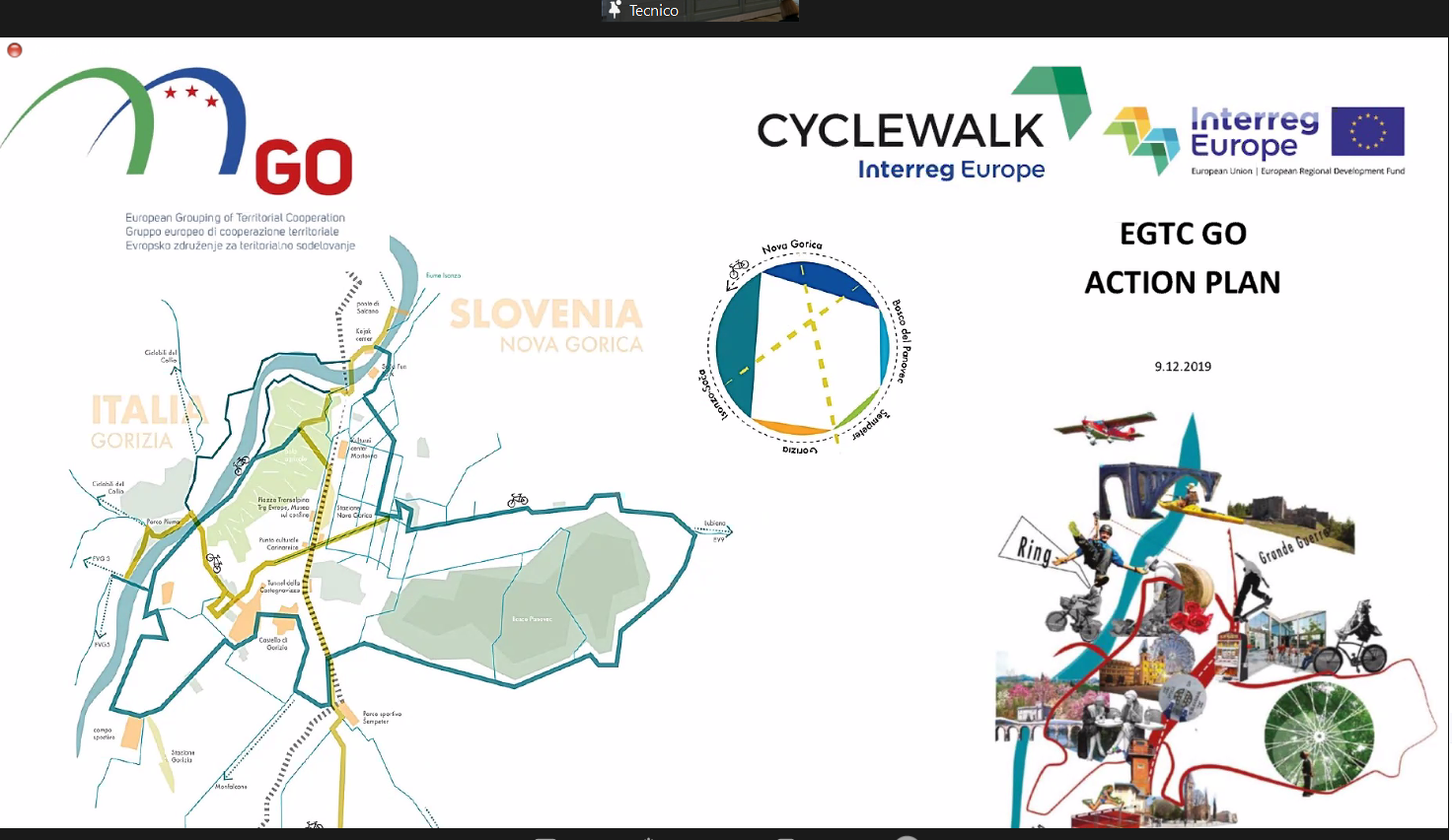
Cyclewalk at the final event of the Interreg - CROSSMOBY and BIKE NAT cross-border-cooperation projects
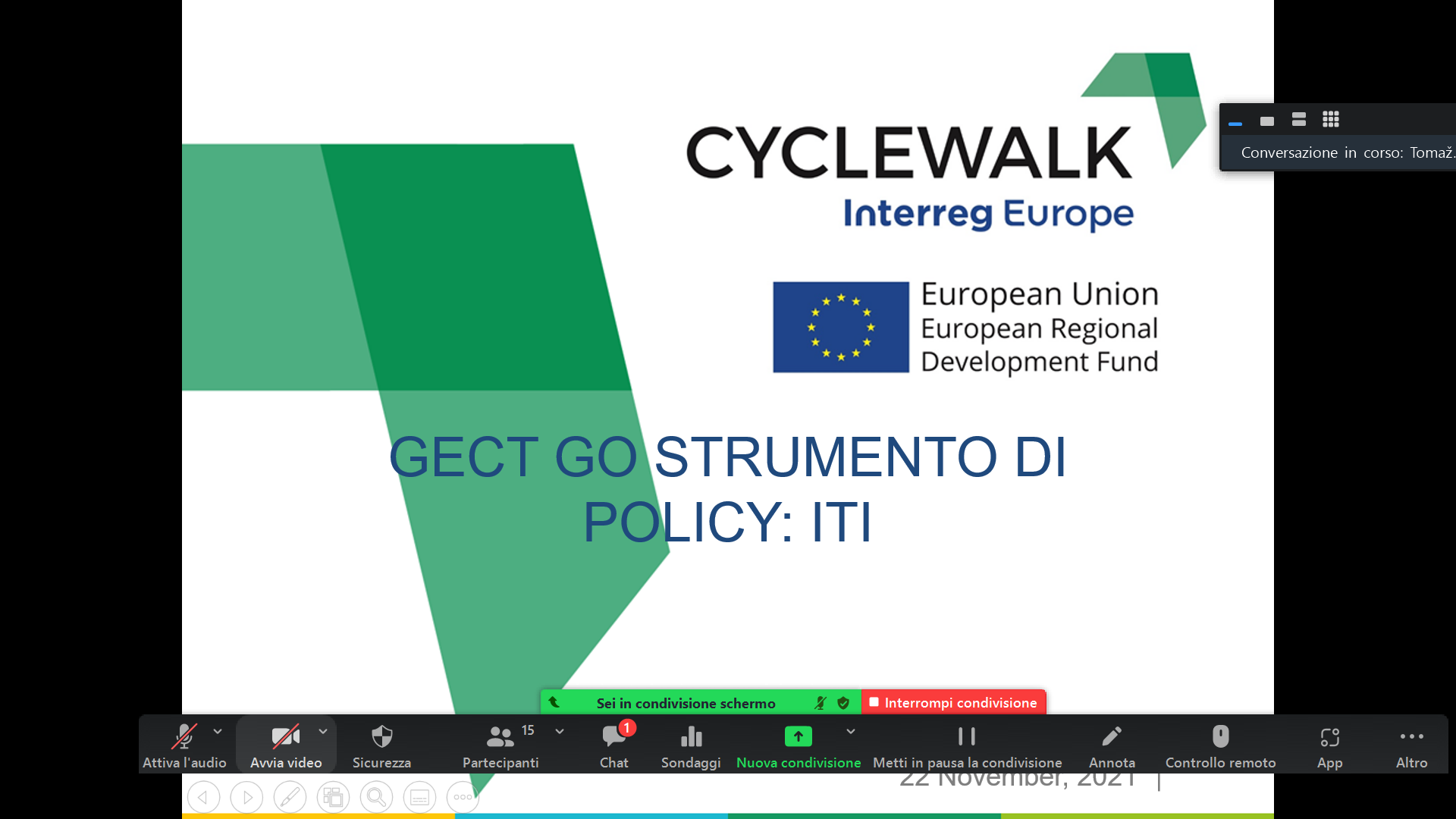
On 23 November, the EGTC GO Urban, Transport and Culture Committees discussed the implementation of the Cyclewalk action plan in the cross-border area.
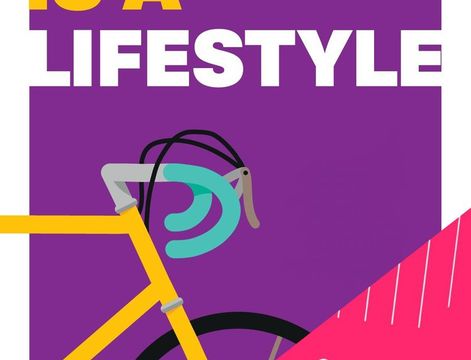
The Cyclewalk project has featured in the EGTC GO communication campaign during the famous Giro d’Italia.
The Giro d'Italia (Tour of Italy) also known as t...
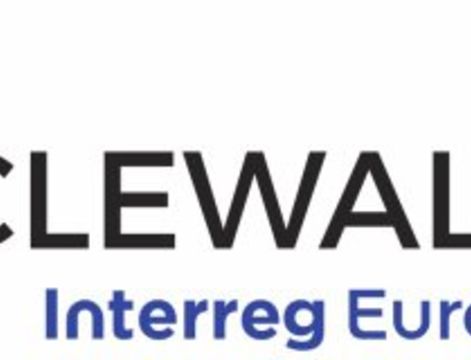
Project news from the Austrian partner Regionalmanagement Burgenland Ltd.
Cyclewalk | Mobil im Burgenland (b-mobil.info)
https://www.b-mobil.info/de/projekte/...
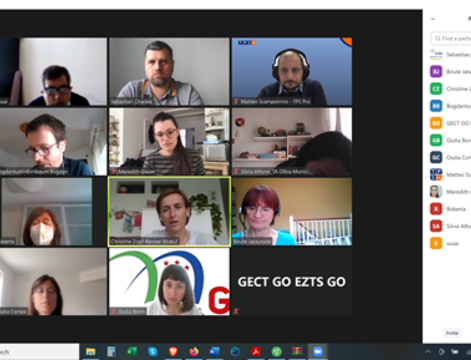
Cyclewalk project partners met online to discuss upcoming activities on 18 March and on 27 April.
The partners presented the status of the implementation..
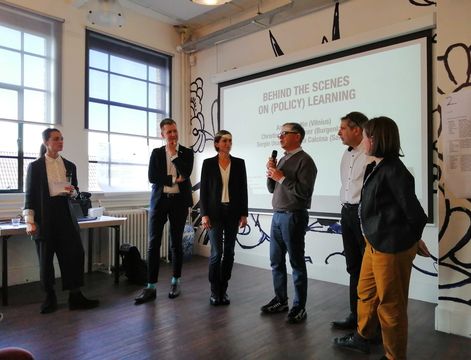
The final conference held in Delft at the end of October received a fair amount of press attention and media coverage.
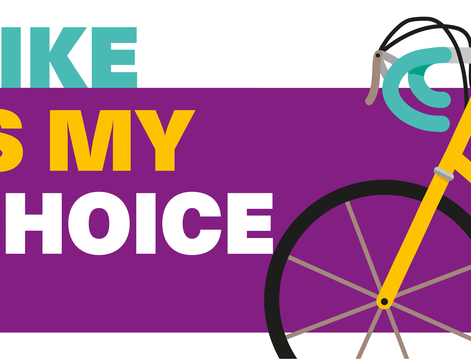
The second phase of the project is abou to end! What would be the next steps?
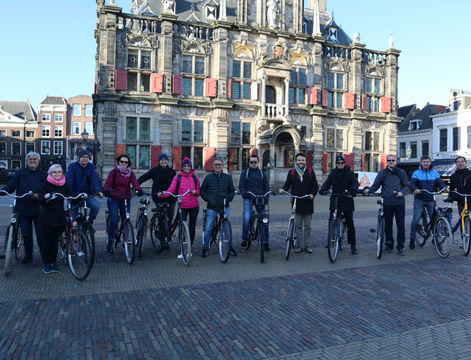
Interactive sessions, Q&A and world cafè format for the final conference in Delft